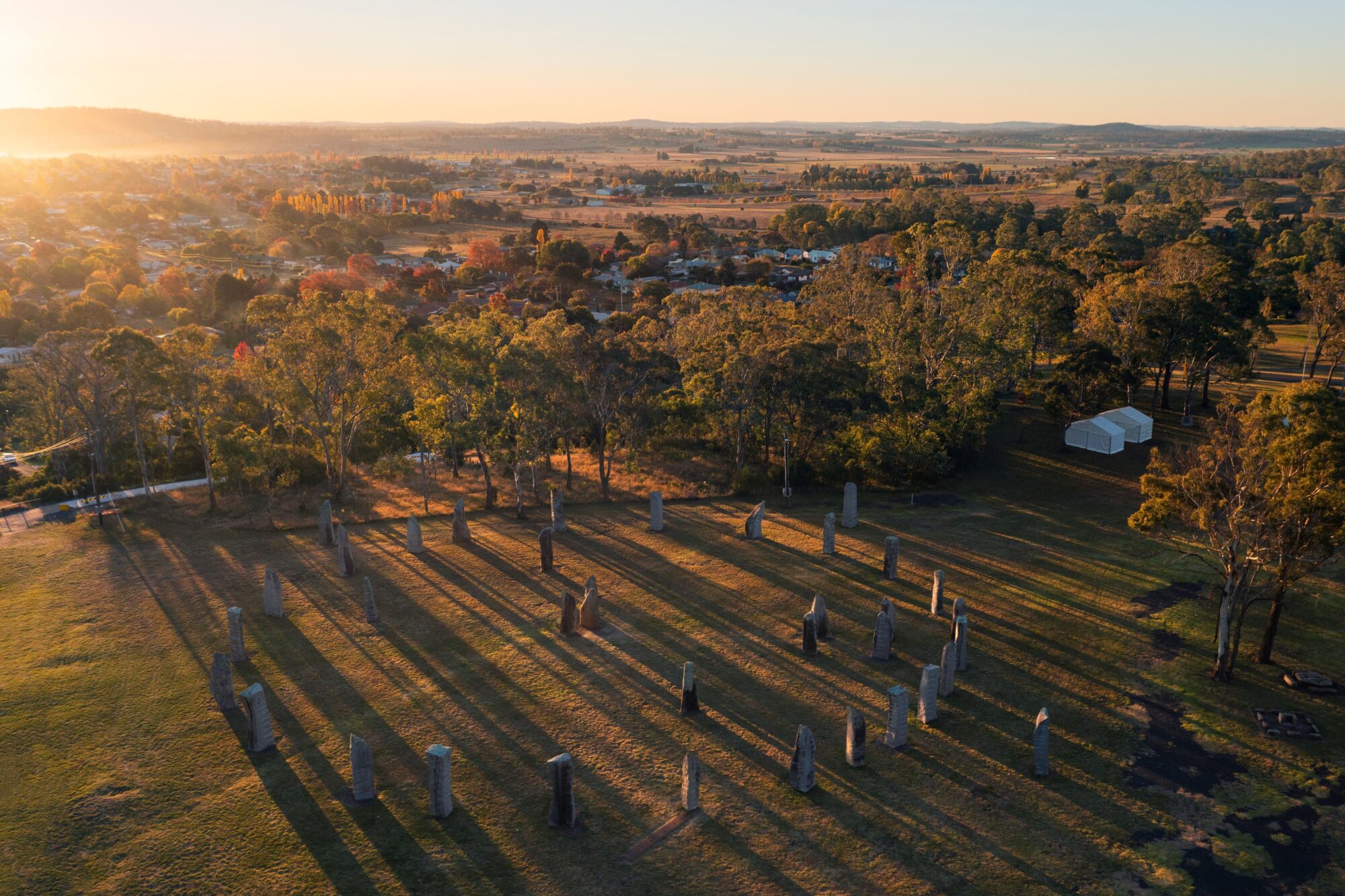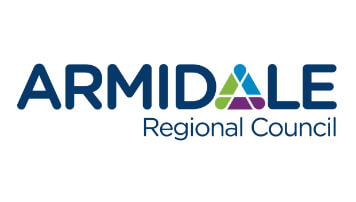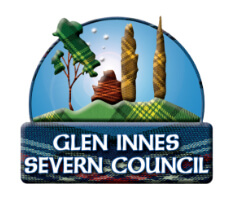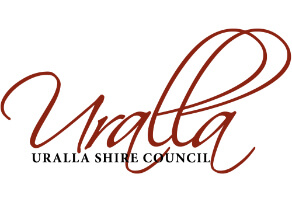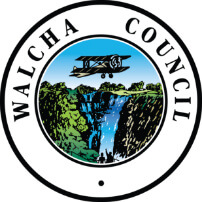Celtic Origins
The Australian Standing Stones celebrate the Celtic nations whose descendants contributed to Australian life and reflect the movement of the Earth around the sun, an important feature of Celtic life.
The ancient Celts were farming people who lived across Europe and the British Isles from around 2600 years ago. The Celts raised stones as calendars to mark the seasons and indicated when they should sow and when to harvest.
The early Celts developed distinctive music, art and literature.
Invasion and occupation of England resulted in Celtic people retreating to Scotland, Ireland, Wales, Cornwall, Isle of Man and Brittany. Their descendants have since spread across the world.
The Standing Stones began as an ambitious project by a small dedicated group of citizens who wanted to mark Glen Innes’ Celtic heritage, where the first settlers, largely Scots, arrived in 1838. Those from Scotland and Ireland developed grazing, dairy and mixed farming enterprises, while those from Wales and Cornwall were often gold or tin miners.
The Celtic Council of Australia initiated the idea of a national monument to honour all Celtic peoples who helped pioneer Australia. Glen Innes responded with this proposal for the Australian Standing Stones, inspired by the Ring of Brodgar in Scotland’s Orkneys and the Callanish Stones on the Isle of Lewis. The Stones were dedicated on 1st February 1992.
Mystery and legend surround Stones throughout the world – feel the powerful, spiritual influence as you walk amidst the Australian Standing Stones.
Your Tour Begins
(The Stones are numbered at their base.)
The array of 38 standing stones includes a circle of 24 stones, representing the 24 hours of the day.
Three central stones are the connecting feature for all Celts.
- The central stone, the Australis Stone (31) is for all Australians and symbolises the link between the old and new worlds.
- The Gaelic Stone (35) to the north, is for Scotland, Ireland and the Isle of Man.
- The Brythonic Stone (28) to the south, is for Wales, Cornwall and Brittany.
From the Australis Stone, look through the avenue of 6 stones to the northeast. The sun rises through this avenue at the winter solstice with its beams shining at dawn on the Australis Stone. The sun’s last rays on this day shine on the inner stone to the North West (34).
- The inner stone (17), to the southeast of the Australis Stone, receives the sun’s first rays at dawn on the summer solstice. Sunset on this day occurs towards the inner stone in the southwest (27).
- One stone (18) hosts 7 ground-level plaques marking the annual movement of the earth around the sun by depicting the sun’s shadow at solar noon.
- The four cardinal point stones, together with stone 17, mirror the 5 stars of the Southern Cross, a welcoming constellation in the Australian sky.
- Looking south outside the array is the distinctive flat stone – the Gorsedd Stone. When Welsh and Cornish communities held Bardic festivals, winners or ‘bards’ were installed on a stone stage symbolised by this stone.
- To the east of the Gorsedd Stone is the tall, squarish stone – the Irish Stone. The Irish Stone is the heaviest stone at 38 tonnes. The inscription on the square edges consists of short, long and sloping lines in the Ogham language – one of the first written languages.
- The inscription translates in Gaelic as ‘Gleann Maqi Aongusa, “the Glen Of the Sons of Angus” – Glen Innes’.
- Tynwald Hill on the hill to the south, acknowledges the Manx Parliament, “Tynwald” – the longest continually serving Parliament in the world.
- To the north of the Stones is The Hill of Tara, a purpose-built tribute to the Irish which represents the ancient seat of the high kings on the Hill of Tara in Ireland.
Things To Do
• Walk among the stones to the central plaque
• Check the solar noon shadow markers
• Try to lift Excalibur from the stone
• Check the Celtic Family Wall
• Climb the steps from Tynwald Hill to the Stones’ viewpoint
• Relax with refreshments at The Croft Celtic Cultural Centre & Cafe – a replica ‘taigh dubh’ (traditional thatched cottage)
• Drive or walk to Martin’s Lookout (400m south) for a view of the town
• Visit the Hill of Tara, the ancient site of Irish Kings
• Attend a flag-lowering ceremony or Winter (around 21 June) and summer (around 21 December) solstice ceremonies
Pick up a copy of the Australian Standing Stones Guide and find out more about upcoming ceremony events from the Glen Innes Visitor Information Centre
Glen Innes Visitor Information Centre
152 Church St, Glen Innes NSW 2370
02 6370 2400
tourism@gisc.nsw.gov.au
www.gleninneshighlands.com
